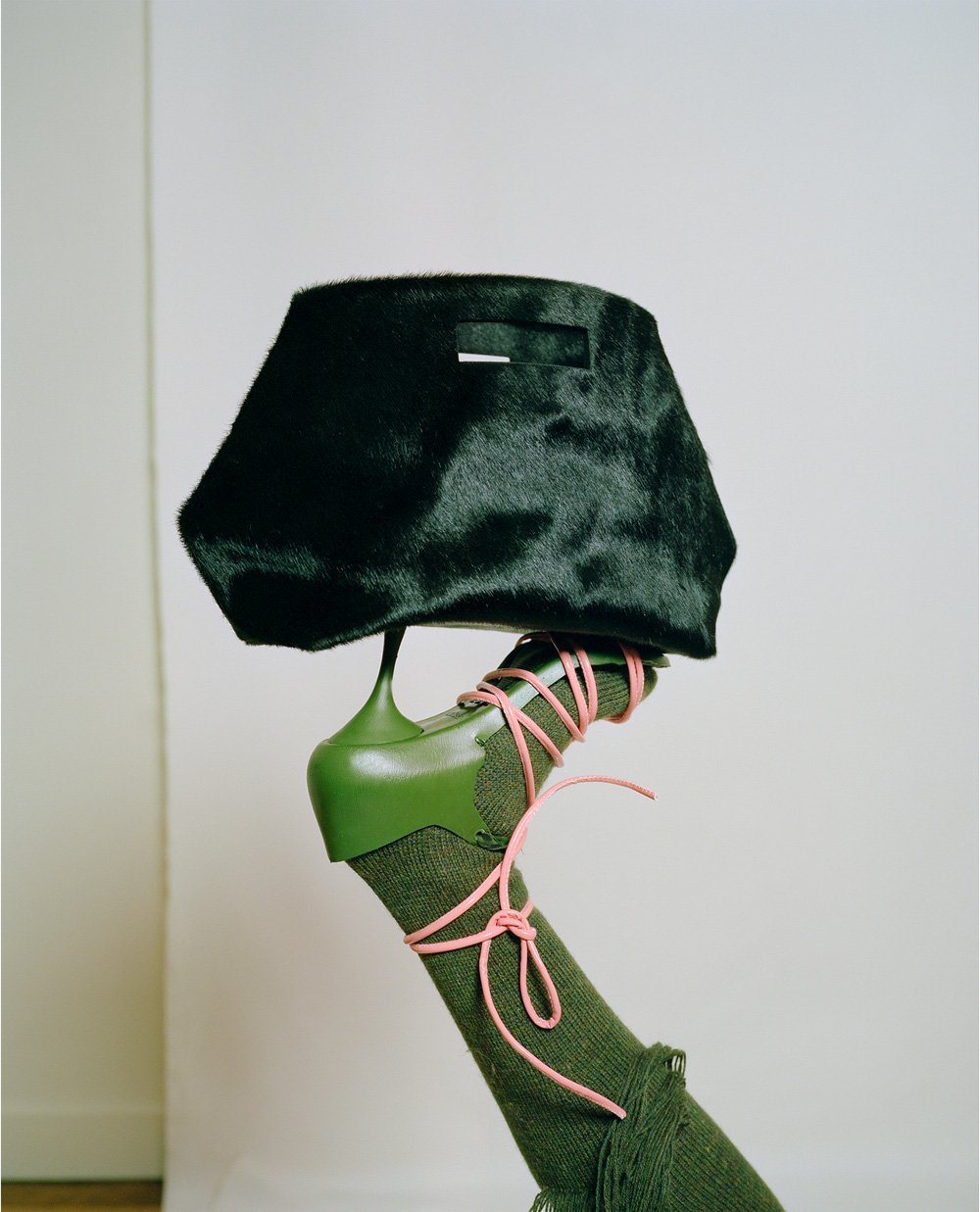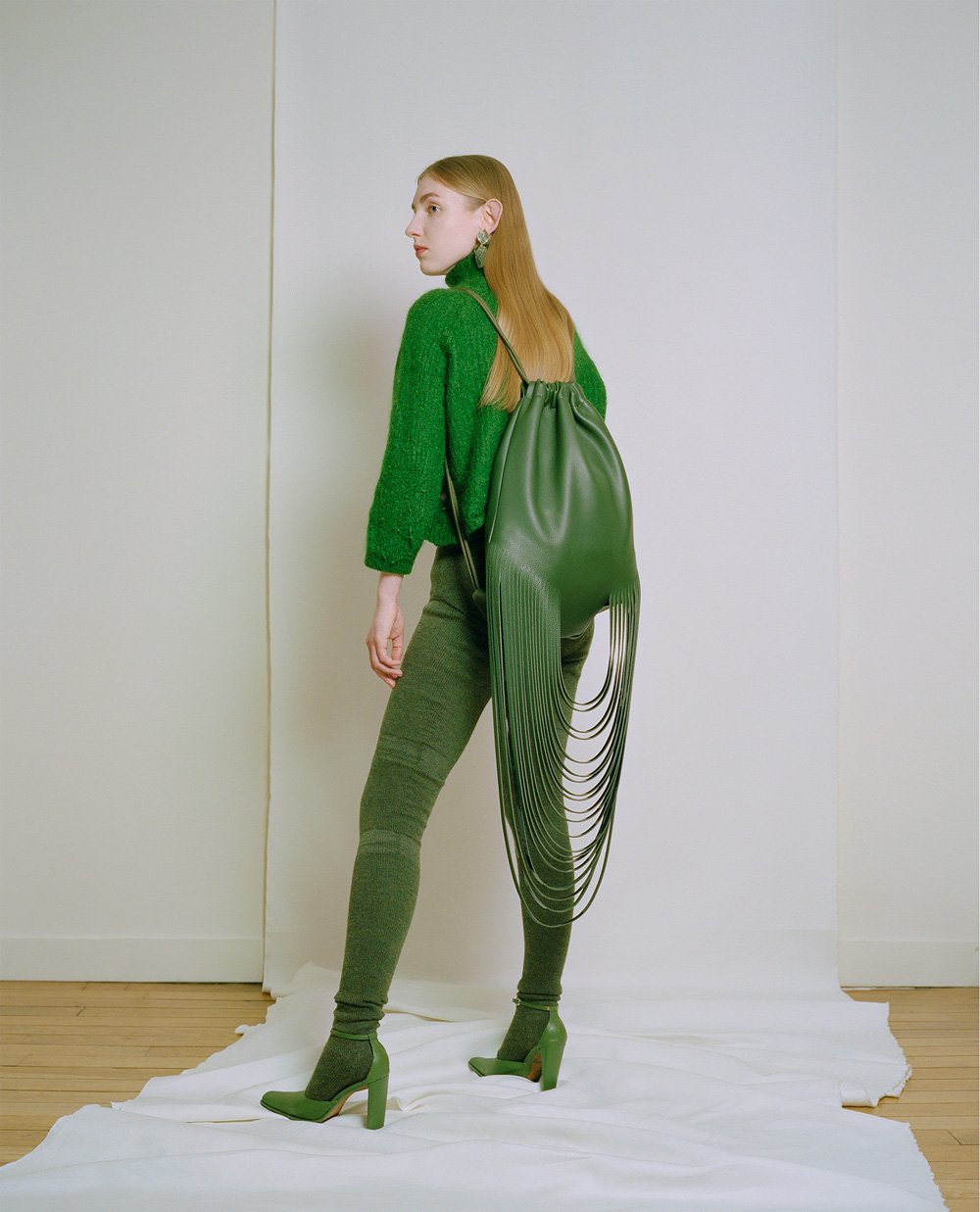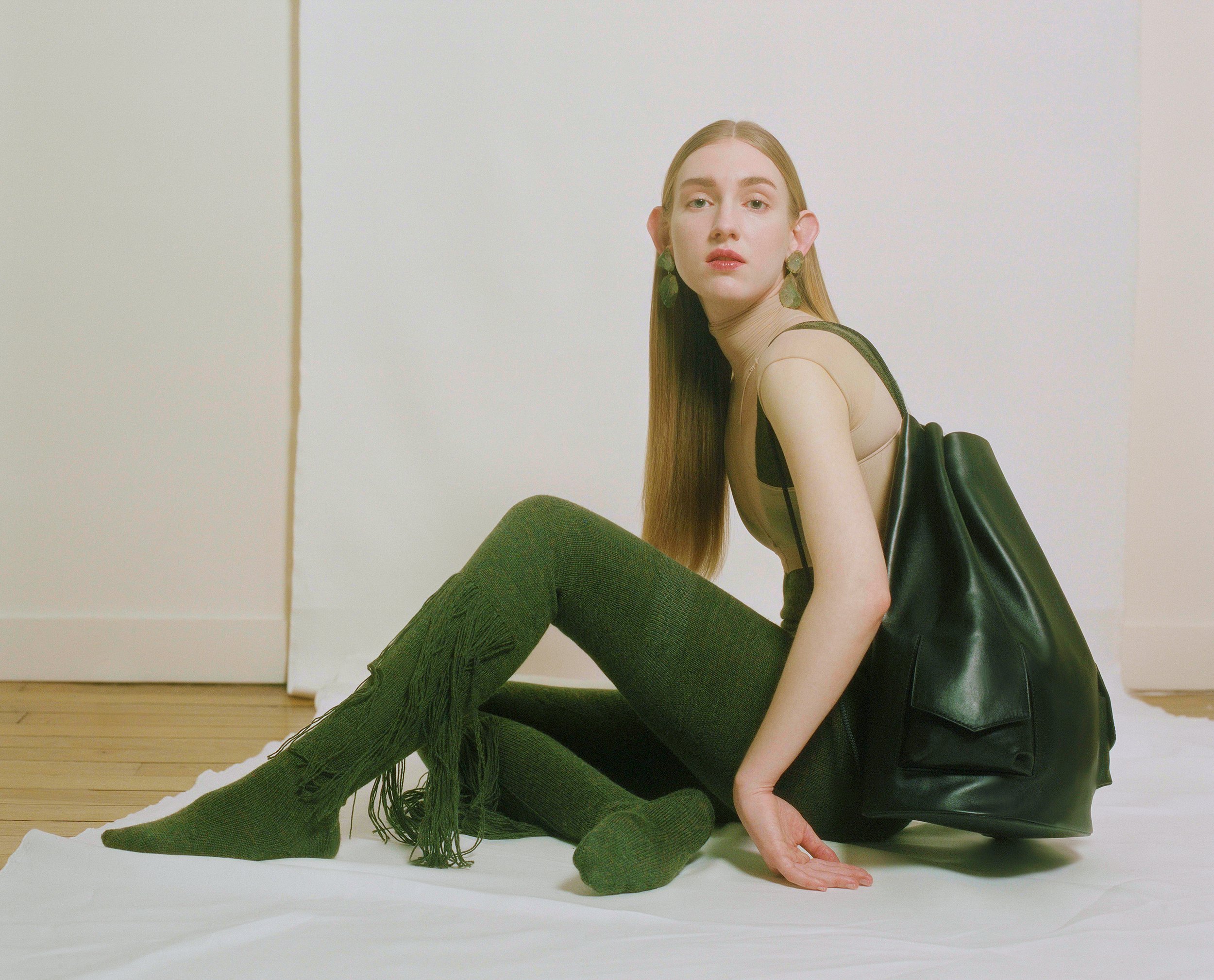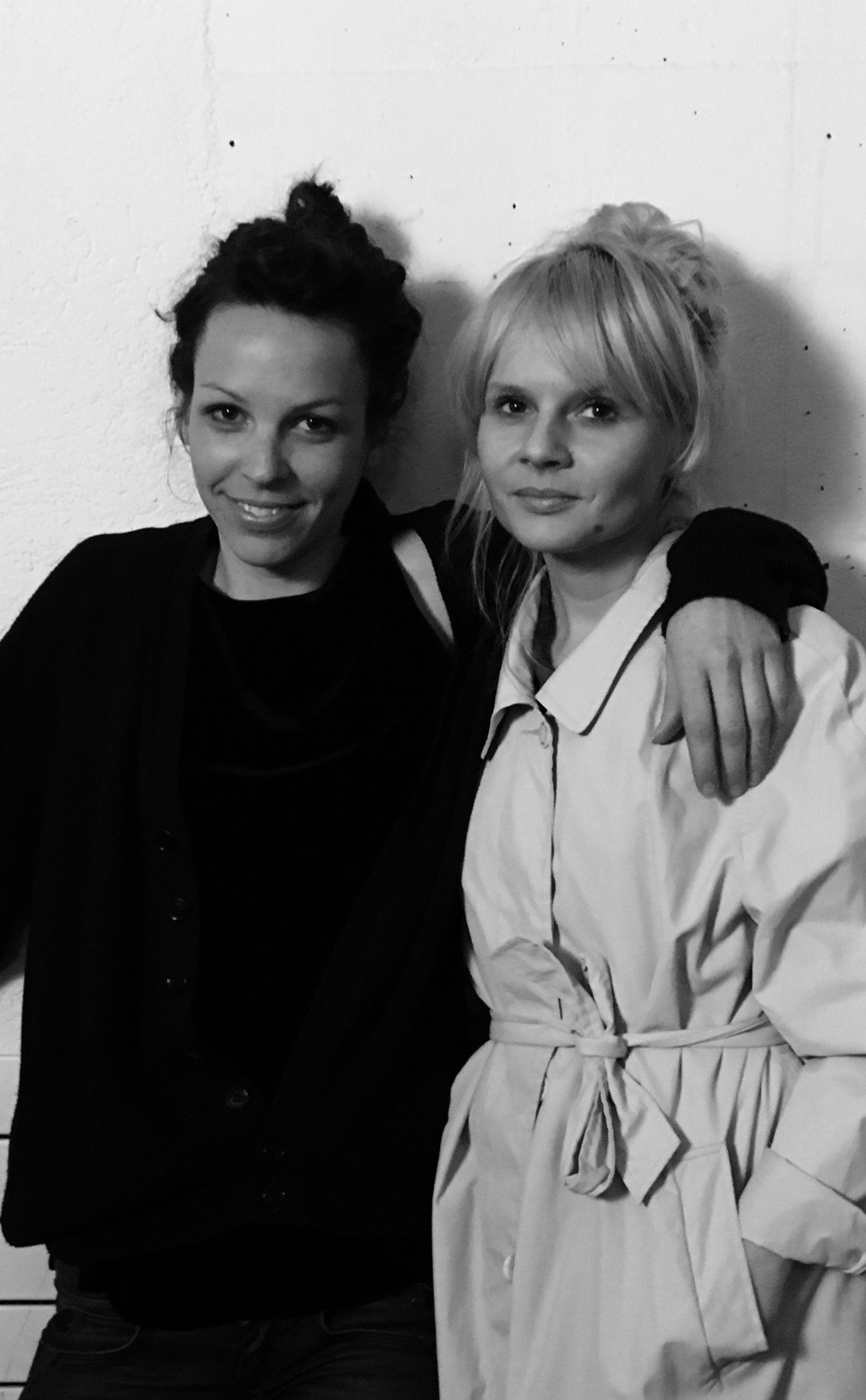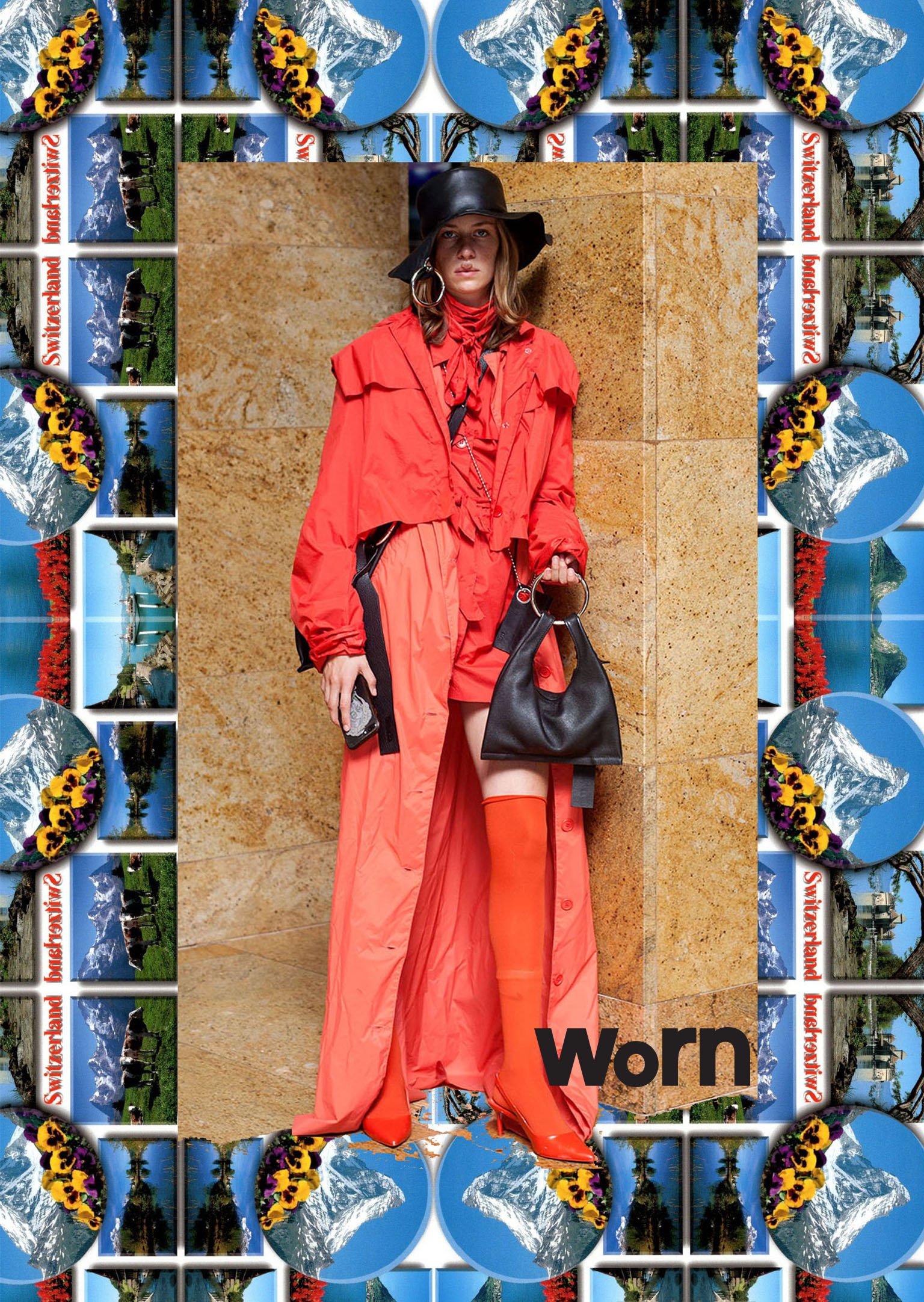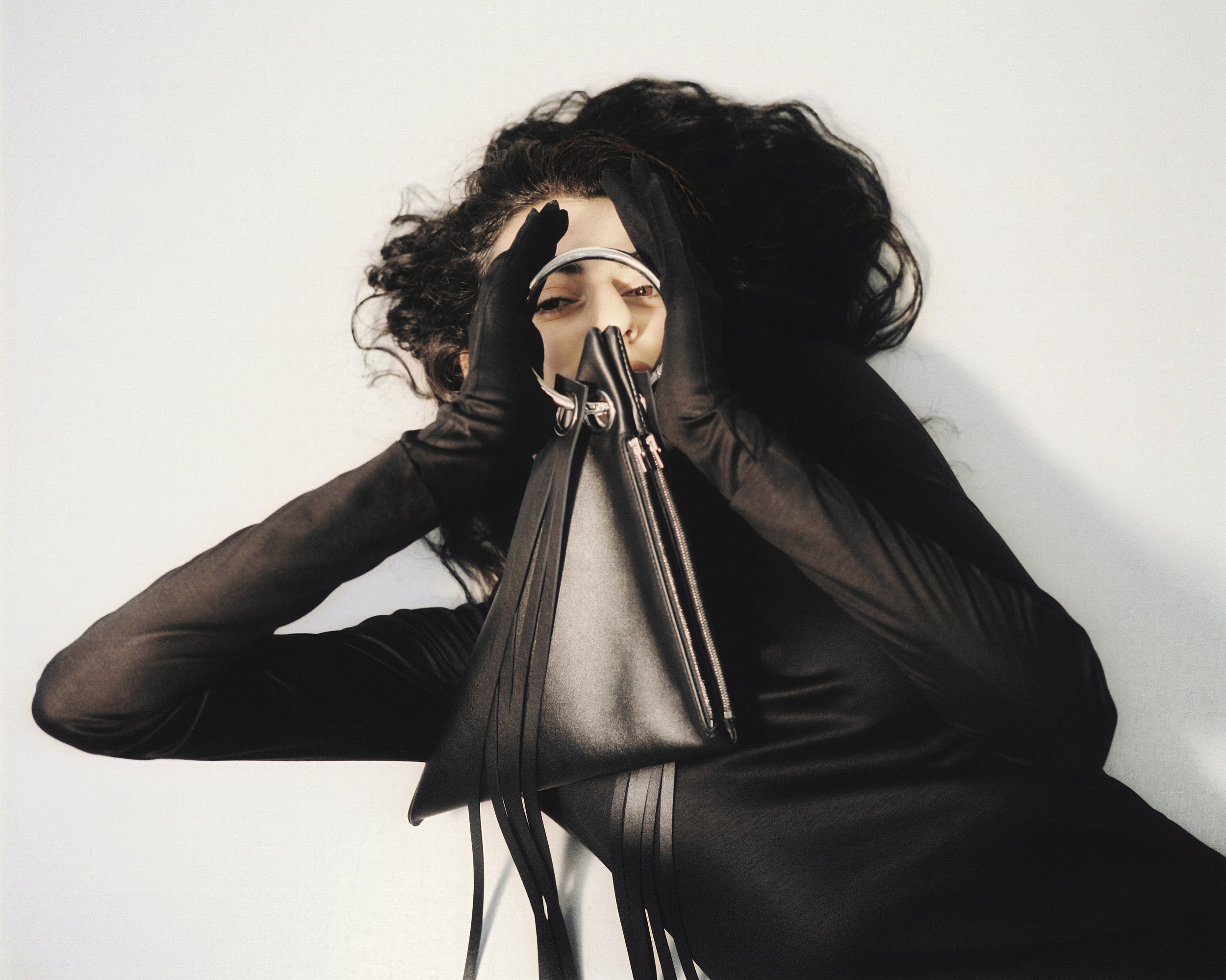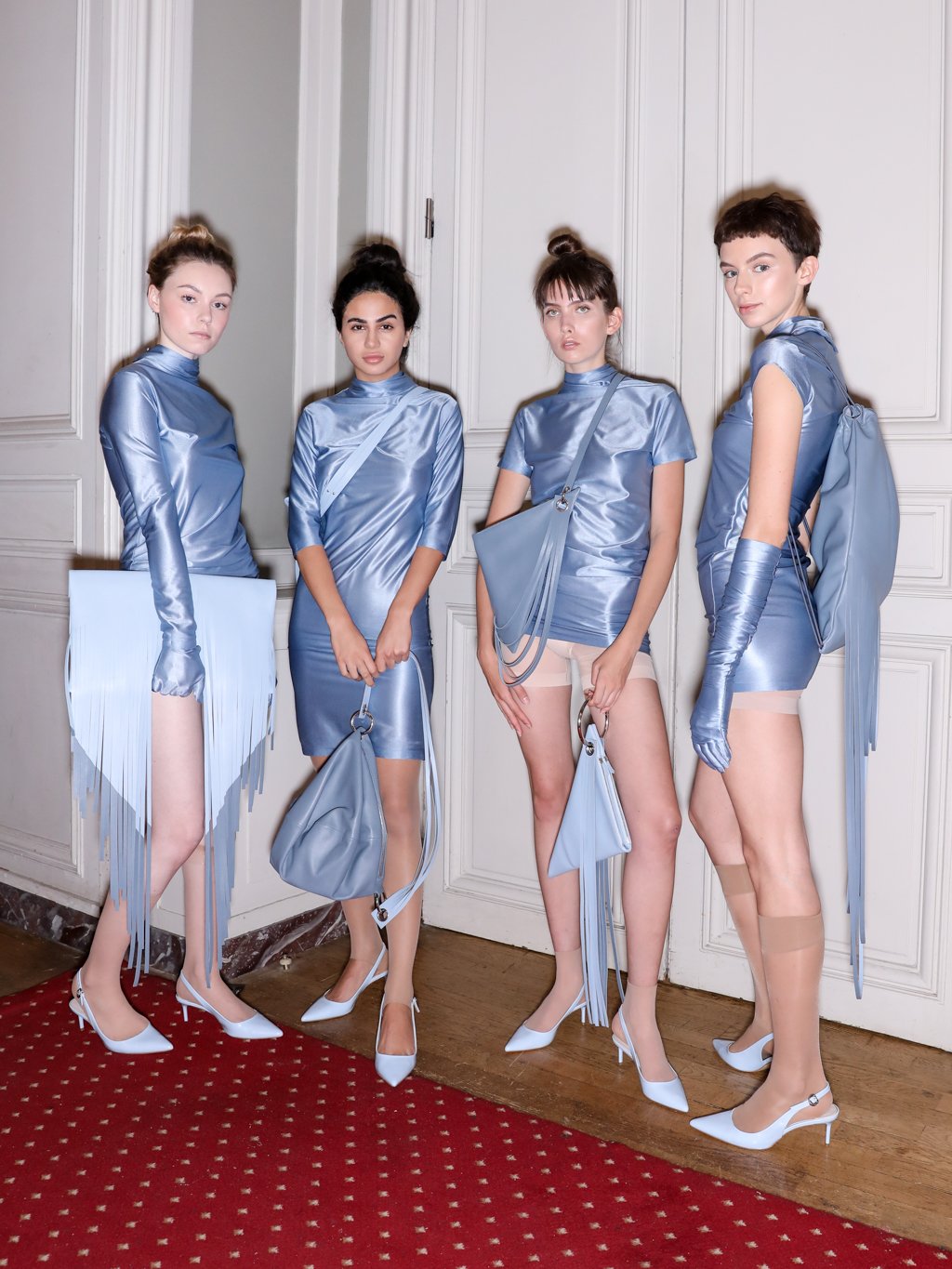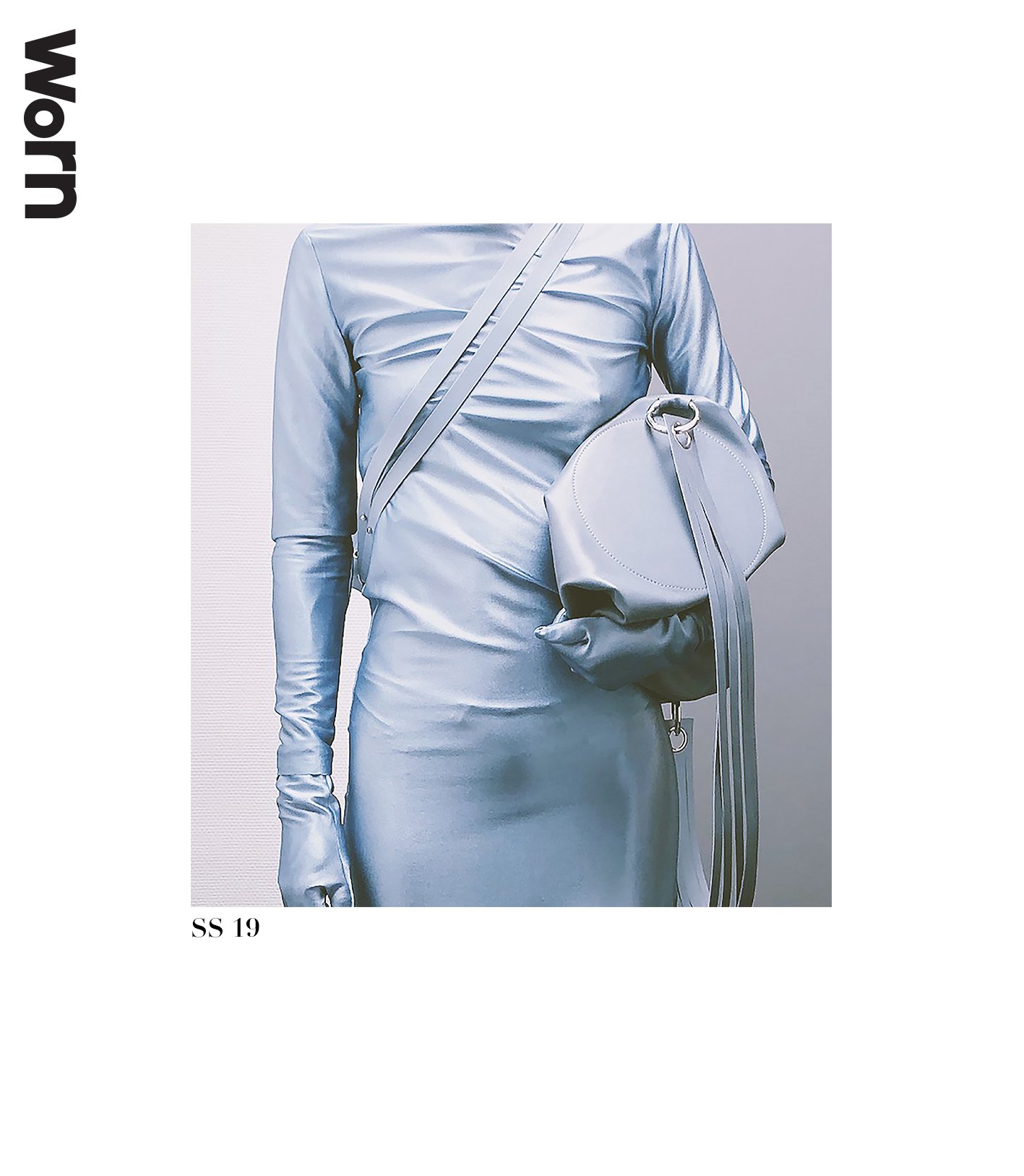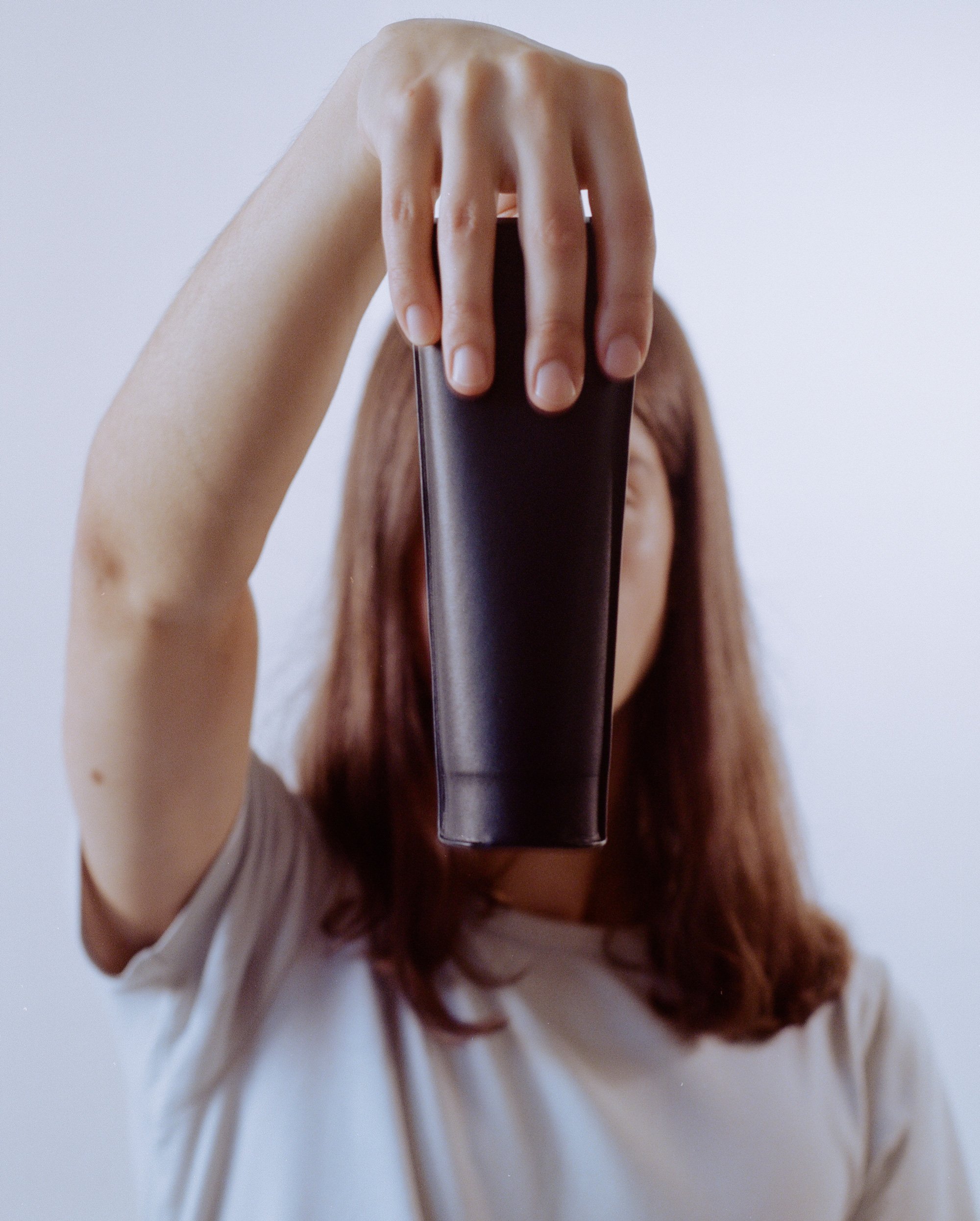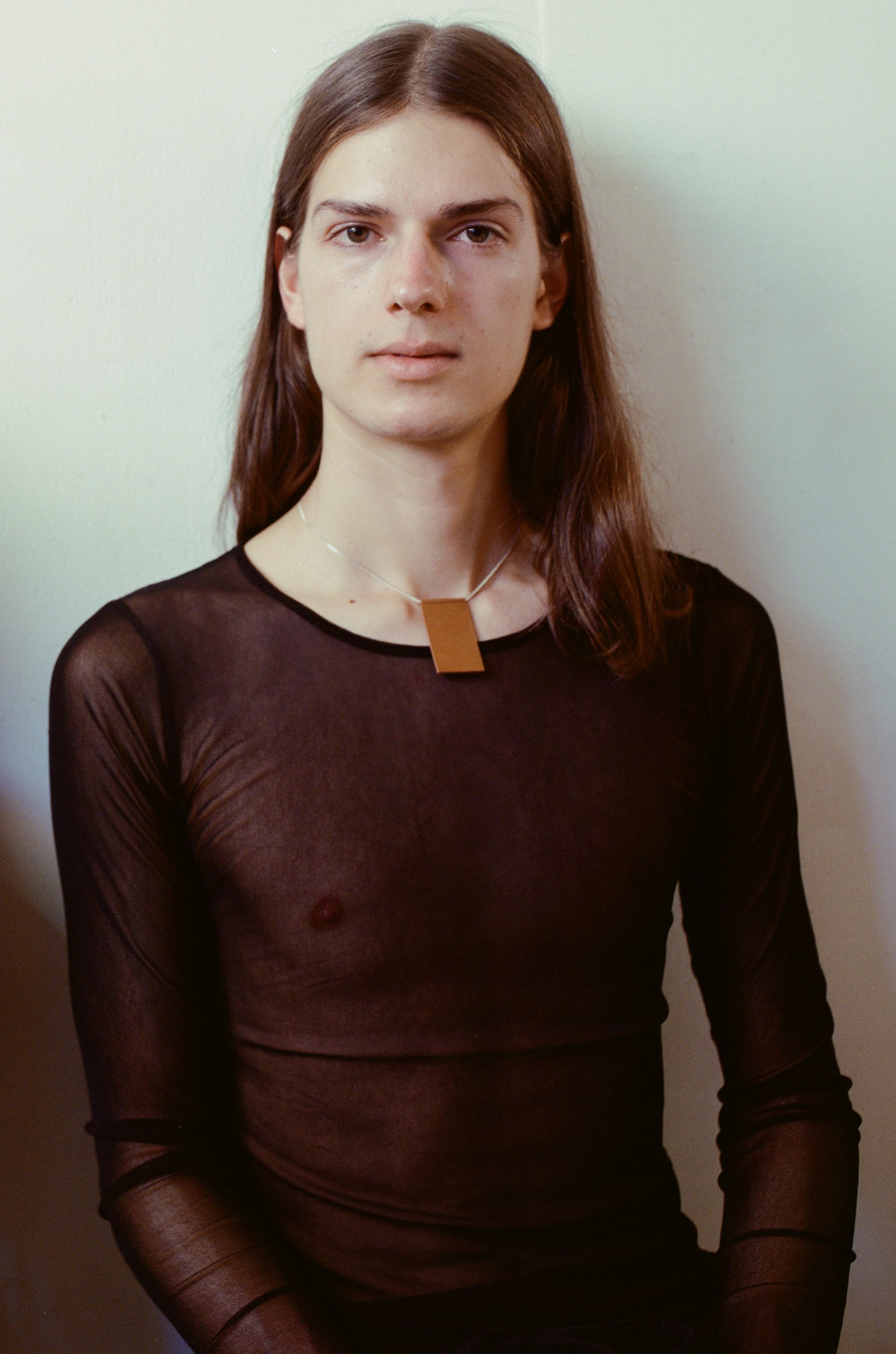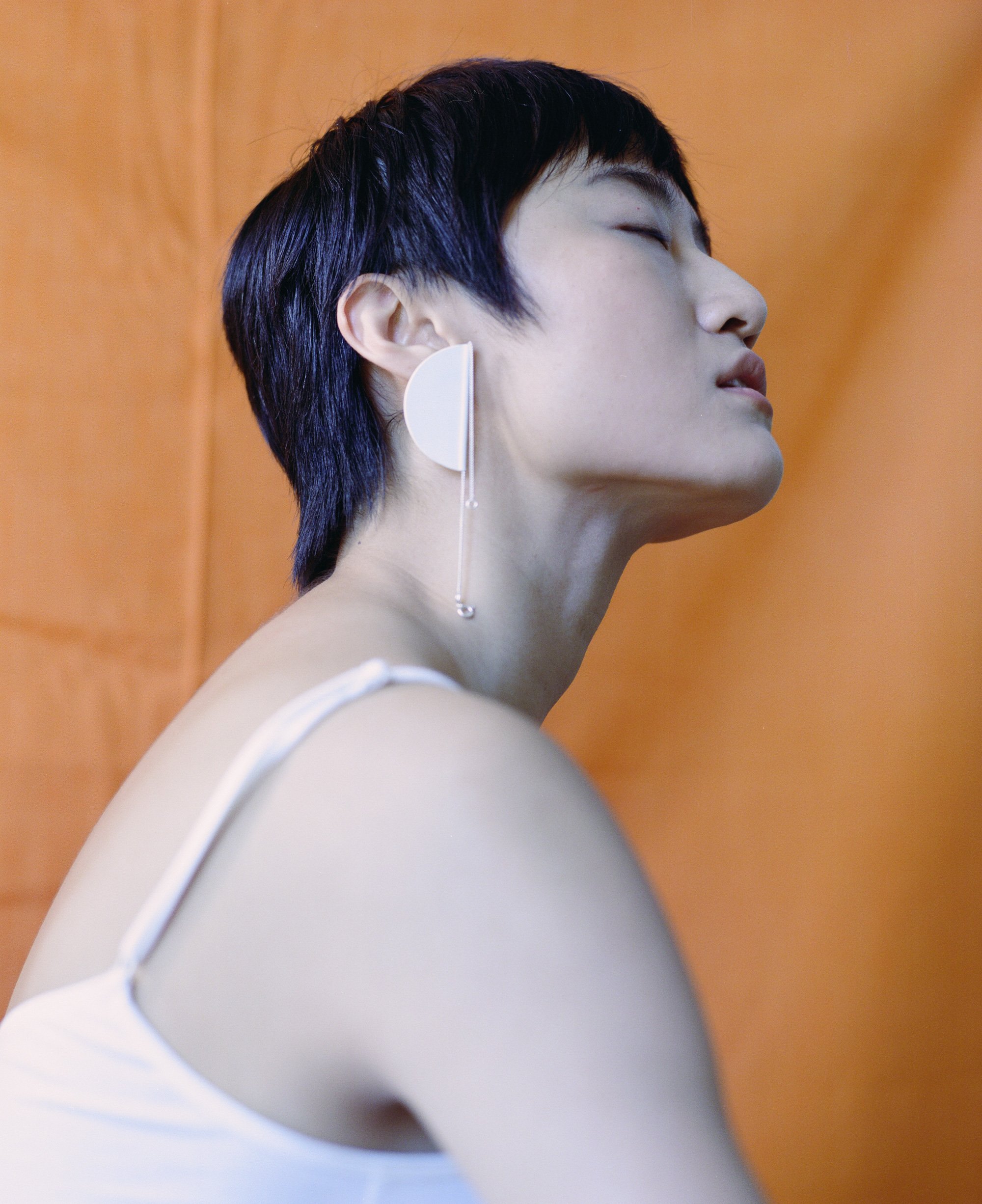WORN BRAND
The Polish-French creative duo Magda Brozda and Pauline Famy established Worn in 2015. Each of the label’s releases is smart, multifunctional and minimalist. Their designs encompass regenerative practices that give a second life to seemingly overlooked and ordinary fashion references, embellishing them with the finest of ancestral craft techniques.
Sleeping bags, envelopes, bin bags… In their design process, Magda and Pauline take everyday objects and twist them in surprising ways. Their process is a constant play with form; the outcome is a set of unique pieces situated at the intersection of accessory and art piece. Dubbed “bag-likes” by the duo, they leave customers with total freedom of interpretation regarding their function. All of their collections have an authoritative presence and can be equally utilised for everyday use or as purely decorative objects. “We don’t tell our customers how to wear our items. It is very important to us that they have the choice and freedom to combine and wear Worn handbags as they wish,” the designers explain.
Magda and Pauline first met while undergraduates at Geneva University of Art and Design (HEAD), but it wasn’t until years later that they began to work together professionally. After graduating from their Bachelor’s degrees, both of them went in separate directions to further develop their own design languages.
Magda built up her styling and creative skills, undertaking two internships that influenced her vision and later entrepreneurial approaches. She first assisted the design team at A.F. Vandervorst in Antwerp. “It was eye opening to get to know their unique way of thinking, working. I learnt what it takes to run a small business while maintaining independence,” she recalls. An internship at Hussein Chalayan allowed her to observe the execution of high-flying creative collections with a strong narrative. “Working at Chalayan was my big dream come true. Him and Margiela have truly changed my outlook on fashion, art and life really.”
Meanwhile, Pauline joined a United Nations mission in Laos, where she deepened her practical skills by working with local artisans on handcrafted accessories. This experience opened her eyes to ancestral techniques and craft enterprises still operating in Europe. Upon returning from Asia, Pauline secured a position at Hermès, where she mastered construction of their iconic artisan bags.
Years later, Magda’s Master’s degree collection created an opportunity for the two to spontaneously collaborate for the first time. “We hadn’t been too close before, which was good at the beginning of our collaboration. We were both free, very different from each other. We worked on a basis of contradictions. I was creative and had a strong vision that lacked proper finishing and technical expertise, which Pauline, in turn, did have. It resulted in a great combination. We realised we could work together successfully,” Magda explains.
The collection got into the finals of the prestigious H&M Design Award in 2015, earning Magda and Pauline the People’s Prize, as well as broader exposure to their work. Moreover, following a presentation at the renowned Mode Suisse event, the collection was purchased in its entirety by Swiss multi-brand store Jelmoli. This positive reception encouraged them to formalise their fashion endeavour and start producing officially as Worn.
The duo composed their own powerful, radical manifesto, giving them a set of rules and ideals that they continuously strive towards in their creative practice.
"WE DON’T BELIVE IN NEW,
WE DON’T PRETEND TO INNOVATE,
WE REFUSE
WE INTERPRET AND REUSE!”
Worn brand manifesto
Disillusioned by the industry’s race for newness, Worn does not aspire to constant innovation. Instead, they put emphasis on the renewal of anything and everything that surrounds them – from remixing seemingly ordinary objects and references, to regenerative production using leftover leather originally created for luxury fashion brands like Louis Vuitton and Gucci. “We set a strategy to keep every collection monochrome, which made the selection of materials easier and helped keep the collection visually coherent.”
Using deadstock materials necessitates embracing the imperfections and varying identity of each and every product. “All our bags can vary from the showroom samples. For some people, this is an intriguing plus, but for others it can be an issue.”
Only a few years back, it was not easy to persuade potential clients to buy such one-of-a-kind pieces. Yet the designers acknowledge that nowadays it is a welcome practice. “Today, there is a burgeoning trend for unique, individual pieces. Back in 2015, it was something we had to sort of educate people about and encourage them to invest in.”
A Worn design never starts with a sketch. Every idea is born in an experimental, observational process. “For us, an accessory is strongly connected to proportion, movement, the way one holds it, the attitude involved. It is difficult to start its conception by sketching, if we want to get out of the frames of traditional design and avoid the already known,” the duo explain. Putting artefacts against the body and capturing those interactions on camera, they come up with the shapes that they want to develop further. “Following this, Pauline refines the designs with technical aspects.”
The majority of Worn pieces are produced in their Geneva studio. Some projects involve cooperation with ateliers in Magda’s home city of Czestochowa in Poland, and Italian workshops in Tuscany, depending on the product and finish required.
Prototypes, however, are created in their entirety in the studio. “Some brands rely solely on the technical expertise of the manufacturers and pass the design on as a sketch. We turn up with a completely finished prototype, realised with the meticulous ‘Hermesque’ approach of Pauline,” says Magda. They apply the finest artisan details not only for visual impact, but also longevity. “Applying the right finish really is an art. Some seemingly unimportant treatments might add a few years of life to the product. We want our bags to be a kind of ‘best friend’ for many seasons and to suit any place, time or occasion.”
Worn’s collections interact with the body from the point of conception to the final showcase. “We prefer presentations over showrooms. It is important for us to present our objects in motion.” Their presentations act as conceptual performances revealing the collection’s aura.
While many consider accessories as a complementary touch to the rest of the outfit, Worn’s take is quite the opposite. They release capsule collections of garments, which act as a pure, tonal canvas against which their bag-likes can shine. The label’s strong debut at the Paris Fashion Week F/W 2016 was an energetic, fiercely-red collection styled with trench coats of varying length. Later seasons have incorporated frayed denim jackets, mini to midi shiny satin dresses, and creamy bath robes.
“When developing the clothes for the capsule collections, we look at archetypes. A trench coat or denim jacket keep very clear, easily-defined codes. We seek staple garments from anybody’s wardrobe, in which anyone can feel comfortable and find themselves,” Magda explains.
Magda and Pauline find collaborations crucial for inspiration and creative growth. Whether it is working on commissioned pieces for others, or inviting artists and photographers to contribute to their collections, they thrive on working outside of their usual practices and aesthetics. “Working with others opens our minds, enriches and inspires our work.” One of the duo’s frequent collaborators is the master textile designer and draper Muriel Manuel. The artist created atmospheric free-cut dresses for their AW18 presentation, set in the sleepy vibe of a thermal bath spa retreat.
“We also don’t want to be defined solely as our own label and love working for other designers,” the duo state. This is exemplified by their collection of flower-bags, which they designed and developed for the Brazilian designer Neith Nyer. The dreamy flowers, smocked pillows and bags marry fantasy with function. This project evidenced their exceptional abilities to utilise leather to its fullest, creating playful, make-believe forms.
Worn has no plans to move away from the picturesque oasis of Geneva. Magda describes how the city has the perfect urban-nature balance, allowing them to stay focused and develop at their own pace, following their own rules. “The mentality of people is brilliant here – they are very open-minded. Swiss design respects craft and transparent production, people have a hard-working attitude and don’t try to prove anything to anybody,” explains Magda.
Asked about their hopes and goals for the future, Magda says: “Perhaps first and foremost to continue to stay true to ourselves, to stay authentic. We also don’t feel that our clients expect us to follow standard seasons and release a set amount of collections each year. Sometimes a sense of surprise is better than following a timeline and doing the expected.”
Worn designs are surely the antithesis of the expected. Each collection continues to surprise and challenge with fresh and modern forms. “We recently started playing more with unusual decorative objects. Our clients received them very well.”
The label’s latest collection, “Radical”, is a satisfying mix of fashion, jewellery and art pieces. It involves sleek, leather-covered artefacts, such as black picture frames and beauty product tubs. Objects whose visual aspect is normally perceived as secondary get a unique chance to be looked at from a different perspective. “We constantly ask what a function is and what it’s not, how we can re-invent it.” It is exciting to see where these creative explorations will take them next.
Check out their website to browse through their inspiring, form-defying pieces and follow them on Instagram keep up-to-date with their latest collections.
All pictures courtesy of Worn brand.

